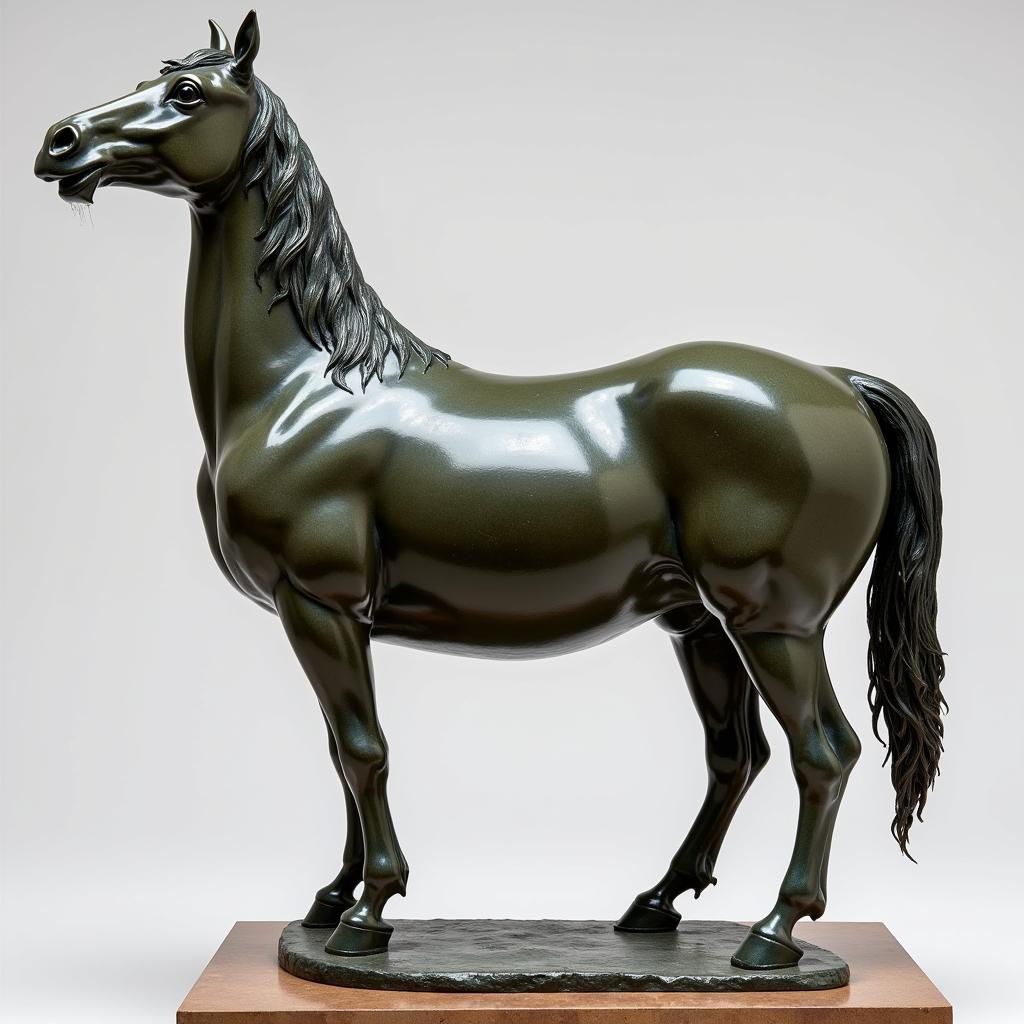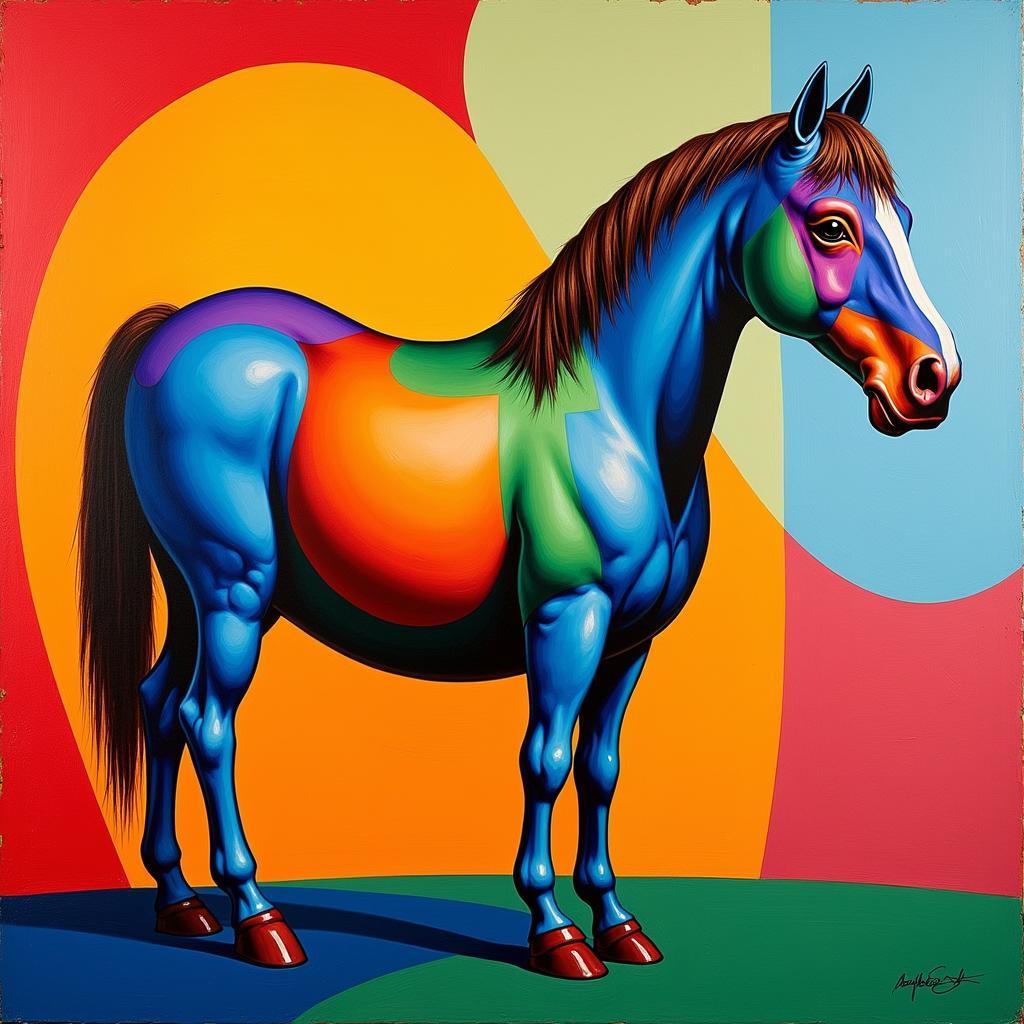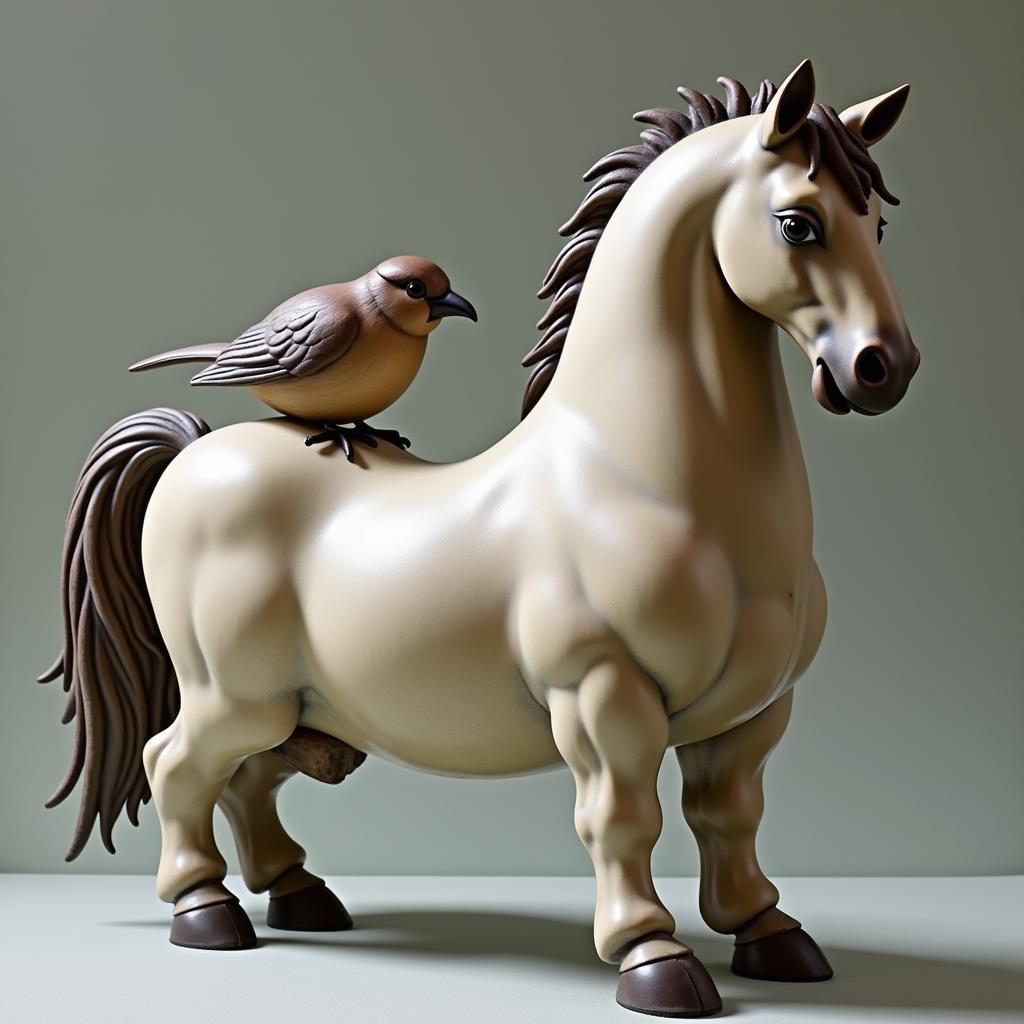Fernando Botero, the celebrated Colombian artist, is renowned worldwide for his signature style known as “Boterismo.” Characterized by exaggerated volume and rounded forms, Botero’s art transcends mere aesthetics and delves into profound explorations of human nature, social satire, and cultural identity. While his human figures garner much attention, Botero’s depictions of animals, particularly horses, hold a unique allure and offer captivating insights into his artistic vision.
 Bronze sculpture of a plump horse by Fernando Botero
Bronze sculpture of a plump horse by Fernando Botero
The Enduring Appeal of the Horse in Art History
The horse has been a prominent subject in art throughout history, symbolizing power, grace, freedom, and companionship. From the prehistoric cave paintings of Lascaux to the equestrian portraits of European monarchs, horses have captivated artists for millennia. Botero’s approach to depicting these magnificent creatures, however, sets him apart, infusing them with his distinct artistic language.
Beyond Realism: Botero’s Artistic Interpretation
Botero’s horses are not bound by the constraints of realism. He liberates them from anatomical precision, instead embracing a playful exaggeration of their forms. Their bodies swell with a captivating abundance, their legs become sturdy pillars, and their necks gracefully curve with an almost sensual allure. This departure from traditional representation allows Botero to explore the very essence of the horse, capturing its strength, gentleness, and undeniable presence.
 Vibrant painting of a horse by Fernando Botero
Vibrant painting of a horse by Fernando Botero
The Symbolism of Volume and Form in Botero’s Work
The exaggerated volume in Botero’s work is not merely an aesthetic choice; it carries profound symbolic weight. Some critics interpret it as a commentary on societal excess and consumerism, while others view it as a celebration of life’s abundance and the beauty found in unexpected forms. In the case of his horses, the inflated figures could be seen as an embodiment of their strength and vitality, highlighting their resilience and their connection to the natural world.
“The volume of my figures, I think, gives them a sensual and tactile quality. It’s not that I want to paint fat people or horses. It’s that there’s something about the fullness of form that I find very appealing.” – Fernando Botero
The Influence of Colombian Culture and Heritage
Botero’s Colombian roots deeply inform his artistic vision. The vibrant colors, the celebration of life, and the magical realism prevalent in Latin American art are all echoed in his work. Horses, in particular, hold a special significance in Colombian culture, deeply intertwined with its history, folklore, and rural life. Botero’s depictions of horses, therefore, can be seen as a homage to his heritage, a celebration of the animal’s enduring presence in Colombian society.
The Enduring Legacy of the Fernando Botero Horse
Fernando Botero’s horses, much like his human figures, have become iconic representations of his unique artistic style. They grace public squares, museums, and private collections worldwide, captivating viewers with their playful charm, their undeniable presence, and the thought-provoking questions they raise about art, culture, and the way we perceive the world around us. Through his bold and imaginative interpretations, Botero elevates the horse from a mere subject to a powerful symbol of life, abundance, and the enduring connection between humanity and the animal kingdom.
 A whimsical sculpture of a horse with a bird perched on its back by Fernando Botero
A whimsical sculpture of a horse with a bird perched on its back by Fernando Botero
Frequently Asked Questions About Fernando Botero’s Horses
1. What inspired Fernando Botero’s unique artistic style?
- Botero’s style, characterized by exaggerated volume, has been influenced by a range of factors, including his Colombian heritage, his exposure to European Renaissance art, and his personal artistic exploration.
2. Where can I see Fernando Botero’s horse sculptures in person?
- Botero’s sculptures are displayed in public spaces and museums worldwide. Prominent locations include Park Avenue in New York City, the Hirshhorn Museum in Washington D.C., and the Museo Botero in Bogotá, Colombia.
3. What materials does Botero use for his horse sculptures?
- Botero primarily works with bronze for his monumental sculptures, but he also uses other materials like marble and resin.
4. How does Botero’s depiction of horses differ from traditional equestrian art?
- Unlike realistic equestrian portraits, Botero’s horses are intentionally exaggerated in form, emphasizing volume and curves to convey a sense of playfulness and abundance.
5. What is the significance of the horse in Colombian culture?
- Horses have played a vital role in Colombian history and rural life, symbolizing strength, freedom, and a connection to the land.
Need help with horse care or have questions about our services? Contact Justus Horses USA at Phone Number: 0772127271, Email: [email protected] or visit our location at QGM2+WX2, Vị Trung, Vị Thuỷ, Hậu Giang, Việt Nam. Our team is available 24/7 to assist you.